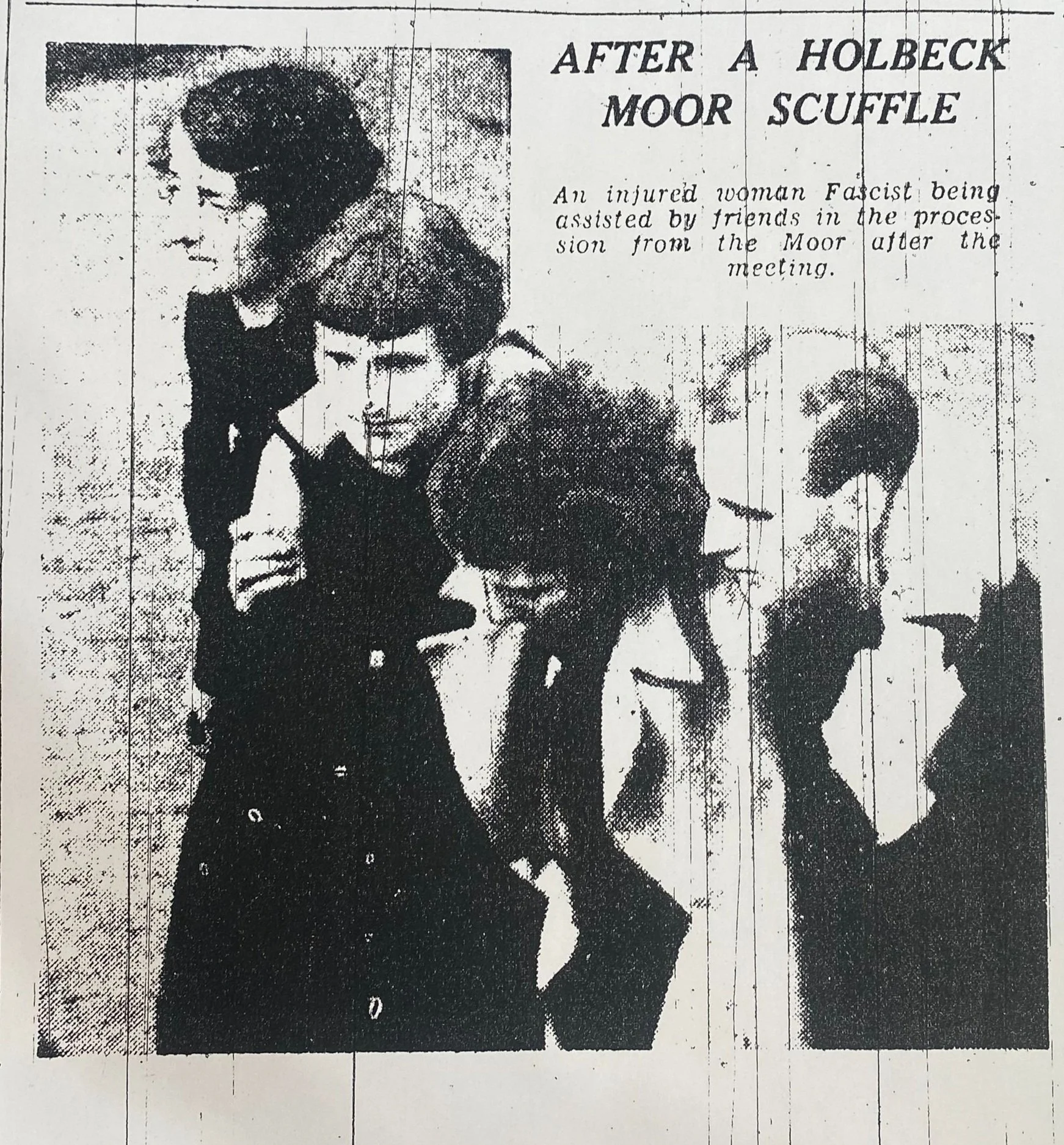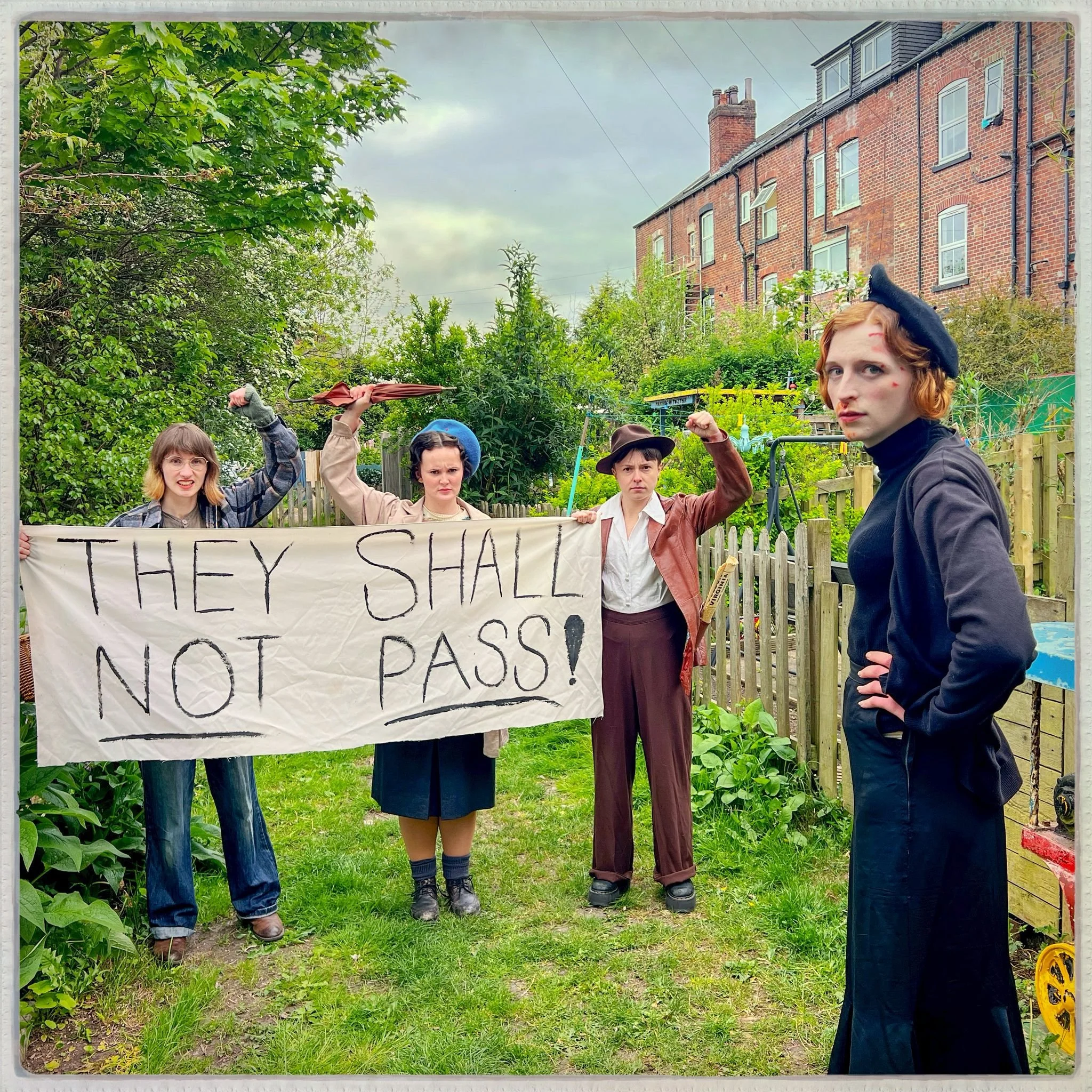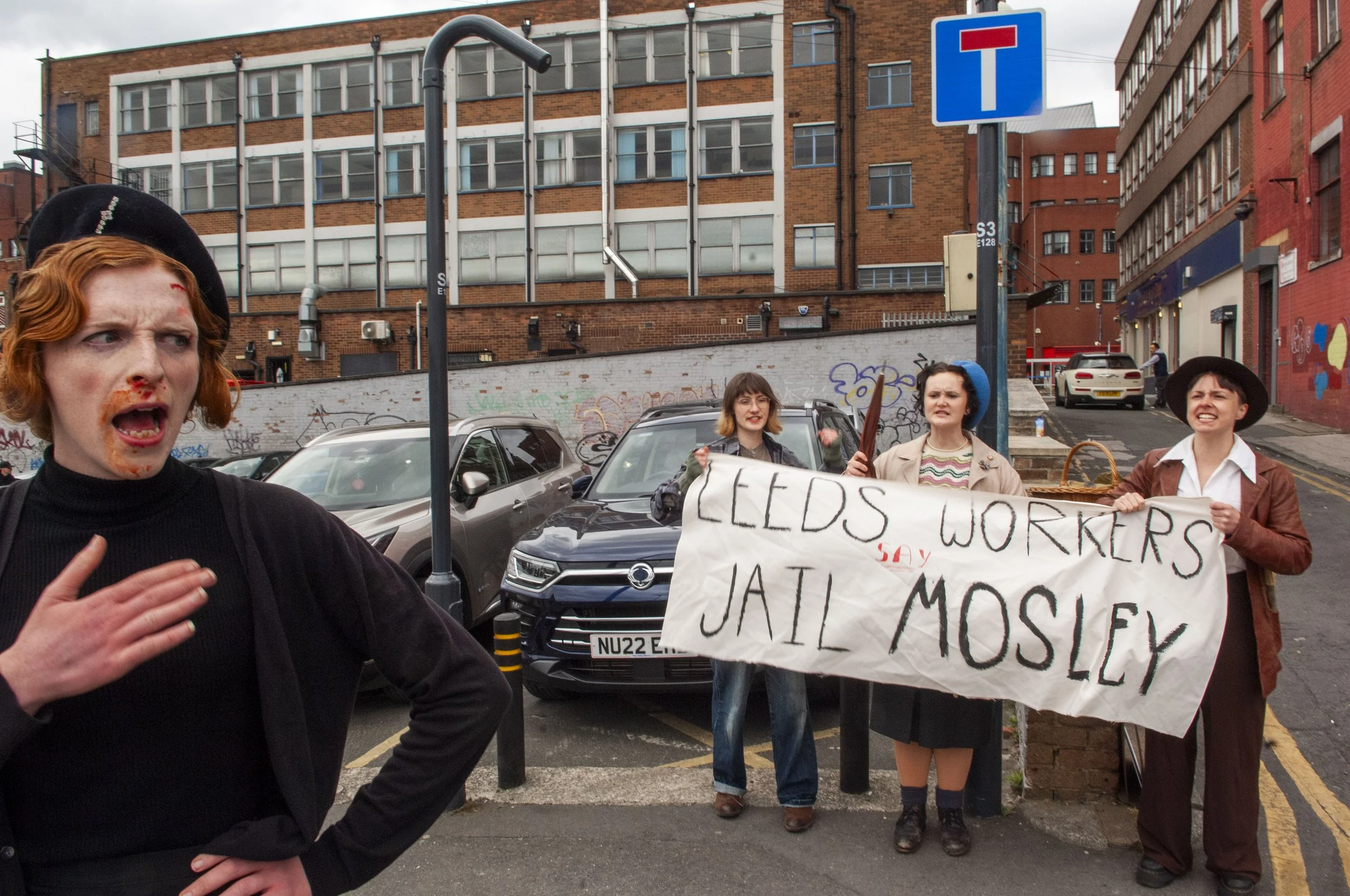BlackSkirts (25)
80 years since the end of WW2 in Europe a group of performers, led by Jude Kershaw, moved through the streets of Leeds. (Details of performance at the end)
1930s Anti-Fascists shout down the BlackSkirt. Image Kit George.
I wanted to mark VE Day appropriately, tired of seeing the same misplaced patriotism, I wanted to explore something radical. When I found an image of an injured young Fascist being removed from The Battle of Holbeck Moor I immediately wondered what had taken this woman to this moment. This work aims to explore why so many women became Fascists in the 30s and how they were held back.
CONTEXT
THE FIRST FASCIST PARTY IN BRITAIN WAS FOUNDED BY A 26 YEAR OLD WOMAN.
Rotha Lintorn – Orman founded the Italian styled ‘British Fascisti’ in 1923, she saw Fascism as the successor to the Scout movement. Both shared the principle of upholding British patriotism and brotherhood. The Party held conservative values of upholding the constitution and fighting Bolshevism, this appealed to middle class – anti-communist sentiments. Other policies included removing the vote from those who claimed Poor Relief for over 6 months and fighting ‘The International Jewish Conspiracy’.
The People’s Front Against Fascism as described by Cole was built on pacts on local and national levels between all on the political left. He encouraged spreading Anti-fascist sentiment by discussing the ongoing Spanish Civil War in workplaces, schools and Universities.
WHAT IS FASCISM?
Using publications from the time Fascism can be defined as being irrevocably tied to centrism, as centrism unites a broad political spectrum through populism without consoling their differences. Fascism grew in Britain due to a succession of apathetic governments, thriving on individual isolation triggered by poor financial periods. and division between the working class.
IN OPPOSITION
Oswald Mosley’s British Union of Fascists absorbed many smaller Fascist groups until they had branches across the UK. One rally attracted 10,000 people to the London Olympia. The BUF were known as ‘Blackshirts’ due to their military style uniforms, the female division had their uniforms changed to include brown skirts, due to Mosley’s fear of ridicule of the name ‘Blackskirts’.
The Police saw themselves as the sole force of public order at BUF demonstrations, leading to conflict as they cleared paths for marches. At early BUF rallies The Police silenced protestors with force to ensure Fascist speakers could be heard by the crowd.
The People’s Front against British Fascism was led by Communists. There had been pressure on The Labour Party to lead this fight but party officials were keen to remove those on the left of the party. This Anti-Fascist movement matched the militant tactics of the BUF, most notably in Leeds and Cable Street.
THE PERFORMANCE
In rehearsals. Image Lizzie Coombes.
Our procession moved through the traditionally Jewish neighbourhoods of Leeds (The Leylands), an area once bullied by The BUF. Our first stop was the former Globe pub at the bottom of Meanwood Road. We then moved through Little London and towards the City Centre. The performance reached its climax when the BlackSkirt was chased down Briggate and pelted with eggs.
Picketed on Edward Street. Image Kit George.
Selected references:
Cole, G.D.H. (1937) The People’s Front. London: Victor Gollancz Ltd/ Left Book Club.
Bray, Mark. (2017) ANTIFA: the Anti-Fascist Handbook. New York: Melville House.
Benewick, Robert. (1969) Political Violence & Public Order. London: The Penguin Press.
Lewis, D.S. (1987) Illusions of Grandeur: Mosley, Fascism and British Society, 1931-81. Manchester: Manchester University Press.
Leeds Anti Fascist Action (1987) “A week of Anti-Fascist Action”, Leeds Other Paper, 6 February, p 12-13.
The Leeds Mercury (1936) “Injuries & Arrests at Leeds Meeting”, 28 September, p1.







